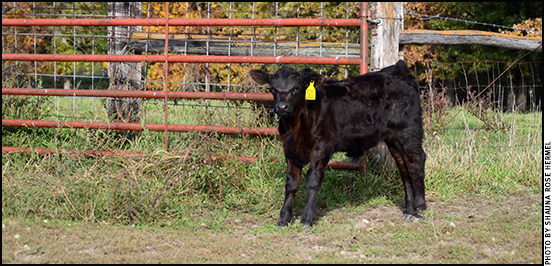
Pain Management
Age of animal during castration and dehorning is most important factor.
The cattle industry has made progress in low-stress handling and better ways to manage cattle, but another issue to address is pain management when doing routine procedures such as branding, castrating and dehorning. Daniel Thomson, professor of production medicine and epidemiology at Kansas State University and director of the Beef Cattle Institute, says there are multiple techniques to accomplish castration and dehorning, including use of polled genetics to eliminate horns, but the most important thing is the age of the animal.
“We should do it as young as possible. If [a] cattle producer is catching calves soon after birth to put tags in an ear, this is the time to castrate — rather than waiting until they are 2 months old at branding or at weaning. I tell my students that the longer the testicles are attached to the calf, the more attached the calf is to the testicles. This sticks in people’s minds to emphasize the importance of early castration,” says Thomson.

“With surgical castrations, however, I think it’s a judgment call regarding whether we need pain medication. The bigger the bull, the more likely I’d use lidocaine and/or some sort of pain control like meloxicam. The smaller, less mature the bull, the less likely he’d need it,” says Daniel Thomson
Scientific reports and papers have dispelled the myth about early castration reducing performance. Though some people didn’t want to castrate early, fearing reduced performance, Thomson explains that calves aren’t mature enough to produce enough testosterone to aid growth until 7 or 10 months.
“If we dehorn and castrate calves after they get to the feedlot, we see an increase in death loss by 160%," he explains. "Even though late castration/dehorning (and the pain involved at that age) is an animal-welfare issue, it’s also an economic issue for the beef industry and cattle feeders — and for cattle raisers because their calves get docked at market if they haven’t been dehorned/castrated before they come to the sale barn.”
When banding calves, there is no point in using pain control.
“The pain — and decrease in feed intake — in banded calves does not occur at that time, in our experience, but occurs two to three weeks later when the band breaks through the skin of the scrotum and causes inflammation. This is when we see depressed intake. It’s hard to administer pain control at that time,” Thomson says.
“With surgical castrations, however, I think it’s a judgment call regarding whether we need pain medication. The bigger the bull, the more likely I’d use lidocaine and/or some sort of pain control like meloxicam. The smaller, less mature the bull, the less likely he’d need it,” says Thomson.
“To get them blocked correctly with lidocaine, and the time it takes (allowing time between administration of the lidocaine block and the surgery), I wonder if we are doing more damage by running them through the chute twice. It’s like when you go to the dentist; you don’t want him to start drilling right after he gives you the novocaine,” he claims.
“We need more research on the benefits of doing it. Also, it can be deceptive to go by body weight, saying we need to use pain medication if the animal weighs 500 pounds or more. It may depend on the breed, and the individual, regarding how early-maturing the animal is. Scrotal circumference might be a better gauge, regarding maturity and how potentially painful this procedure is going to be. You can’t just have a general guideline where one size fits all,” Thomson says.

Editor’s Note: Heather Smith Thomas is a cattlewoman and freelance writer from Salmon, Idaho.





